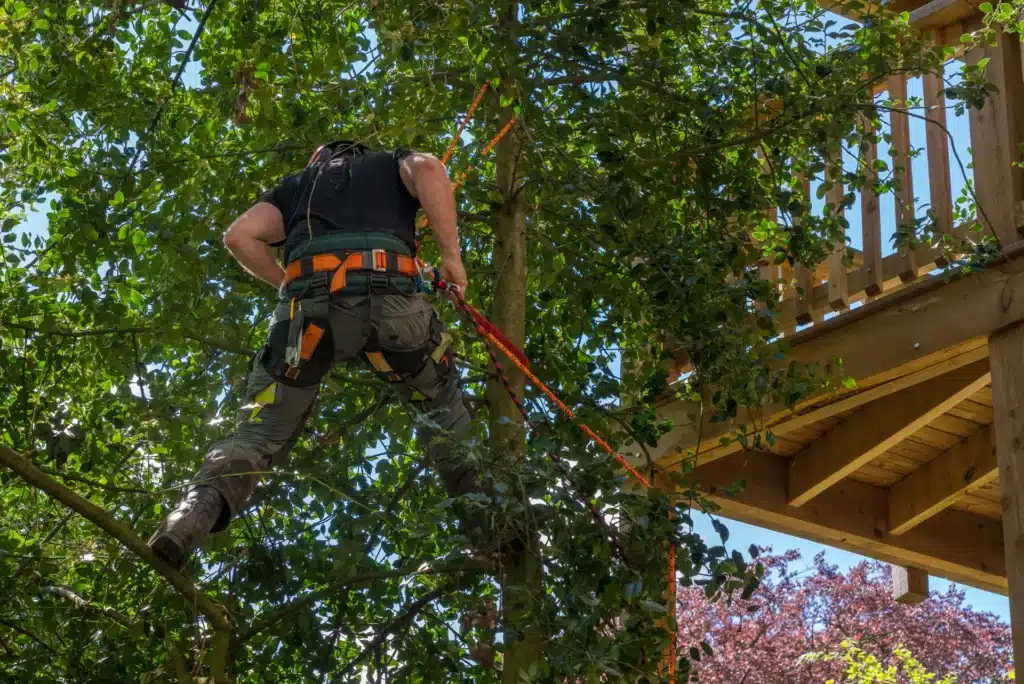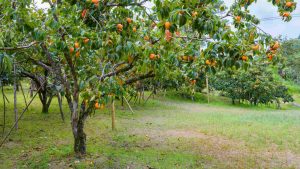Trim a Southern Magnolia Tree is more than just a landscaping duty; it’s an art form that gently influences the health and appearance of this magnificent flora. The Southern Magnolia, with its glossy leaves and enticing aroma, demands careful attention when pruning to maintain its life and elegance. Understanding the significance of this process not only improves the beauty of the tree but also promotes its general well-being. As we go into the complexities of trimming, we’ll look at the necessary approaches, appropriate timings, and tools. This book seeks to empower both enthusiasts and arborists by offering information on how to preserve the beauty and lifespan of these famous trees via skilled and careful pruning procedures.
Understanding Southern Magnolias
Southern Magnolias (Magnolia grandiflora) are evergreen beauty with distinguishing traits that grace landscapes. These trees, distinguished by their huge, glossy leaves and beautiful, fragrant blooms, lend an air of grandeur to gardens and parks.
These trees, native to the southeastern United States, have large, leathery leaves with a lustrous, deep green tone that provide shade as well as cosmetic appeal. Their gorgeous, creamy-white, bowl-shaped blooms radiate a fragrant, lemony aroma that fills the air throughout their bloom, which occurs in late spring or early summer.
Southern Magnolias are hardy and versatile plants that thrive in a variety of soils and temperatures. They normally grow to be 60 to 80 feet tall, with a pyramidal or conical form while young, evolving into a more broad, rounded canopy later in life.
Understanding these particular traits and development patterns is critical before commencing on the adventure of trimming a Southern Magnolia Tree, ensuring that the pruning procedure complements the tree’s innate beauty and strength.
Best Time for Trimming
Determining the best time to prune a Southern Magnolia Tree is critical to its health and growth. Trimming these trees is best done in late winter or early spring, especially before new growth begins. This period, characterized by the tree’s dormant phase, ensures little stress on the tree and encourages speedy healing of pruning scars.
Late winter, frequently after the coldest months, provides a perfect opportunity when the tree is dormant, making it less vulnerable to trimming harm. Trimming during this stage helps shape the tree by removing dead or damaged branches and promoting robust new growth once the spring season begins.
Trimming at the right time fits with the tree’s natural cycle, allowing it to bloom and prosper with fresh vigor in the future growth season.
How to trim a southern magnolia tree
Tools Needed
- Pruning shears
- Loppers
- Pruning saw
Step-by-Step Trimming Process
1. Examine the Tree: Start by properly checking the Southern Magnolia Tree. Identify dead, diseased, or crossing branches that need to be removed.
2. Gather Necessary instruments: Make sure you have the necessary instruments – pruning shears, loppers, and a pruning saw – cleaned and ready to use.
3. Begin with Dead Branches: Begin pruning by eliminating dead or dying branches. Make clean cuts close to the branch collar to prevent damaging the trunk.
4. Address Diseased Areas: Remove any diseased or infected areas, cutting several inches below the afflicted region to avoid disease spread.
5. Remove Crossed Branches: Remove branches that rub or cross each other, since they can create wounds and impede healthy growth.
7. Pruning Wisely: Cut at a small angle slightly above a bud or lateral branch. Excessive pruning might stress the tree.
8. Remove trash: To avoid possible risks, dispose of clipped branches and trash safely.
Before ending the pruning procedure, inspect the tree for any neglected branches or anomalies.Following these procedures provides a methodical and cautious approach to pruning your Southern Magnolia Tree, boosting its health, attractiveness, and lifespan.
- Can you trimming the bottom of a magnolia tree?
- Best Time to Trim Magnolia Tree Branches
- What is the Best Time of Year to Remove Trees
Common Mistakes to Avoid
Over-Pruning: One of the most common errors is excessive pruning. Over-trimming can weaken the tree, impacting its growth and vitality. It’s crucial to follow a balanced approach, removing only necessary branches.
Improper Cuts: Making incorrect cuts, such as leaving stubs or cutting too close to the trunk, can hinder the tree’s ability to heal properly. Always utilize proper pruning techniques, cutting at a slight angle just above a bud or lateral branch.
Neglecting Safety Precautions: Failure to prioritize safety measures can lead to accidents. Always wear protective gear, avoid trimming near power lines, and use sturdy ladders or equipment to prevent falls.
Trimming at the Wrong Time: Trimming at the wrong season, especially during extreme weather or when the tree is actively growing, can stress the tree. Stick to the recommended late winter or early spring timing for optimal results.
Ignoring Tree Health Signs: Neglecting signs of disease, pest infestation, or decay can worsen the tree’s condition. Regularly inspect the tree and promptly address any issues to maintain its health.
Avoiding these common mistakes ensures a successful and beneficial trimming experience for your Southern Magnolia Tree, promoting its well-being and longevity.
Aftercare Tips
Watering Schedule: Maintain a consistent watering schedule, especially during dry spells or hot weather, to keep the soil moist but not waterlogged. Adequate hydration supports the tree’s recovery post-trimming.
Fertilization: Apply a balanced, slow-release fertilizer to replenish nutrients after pruning. Ensure it’s spread evenly around the tree’s drip line to promote healthy growth.
Mulching: Apply a layer of organic mulch around the tree’s base to conserve moisture, regulate soil temperature, and suppress weed growth. Maintain a mulch layer of 2-4 inches without piling it against the trunk.
Monitoring and Pruning Checks: Regularly monitor the tree for signs of stress, new growth, or any required adjustments in pruning. Promptly address any issues to maintain the tree’s health and structure.
By following these aftercare practices, you can support your Southern Magnolia Tree’s recovery, aiding its growth and resilience after trimming.
FAQS
When is the ideal time to prune a Southern Magnolia tree?
Trimming a Southern Magnolia is best done in late winter or early spring before new growth begins.
How much can I trim off my Southern Magnolia without harming it?
It’s important not to remove more than 1/3 of the tree’s canopy in a single pruning session to avoid stressing the tree.
What equipment do I need to prune a Southern Magnolia?
Selective pruning should be used to maintain the tree’s natural shape, with only overloaded or crossing branches removed.
Should I trim the dead or damaged branches on my Magnolia tree?
Yes, it is important to remove dead, diseased, or damaged branches as soon as possible in order to keep the tree healthy.
How can I keep the original form of my Southern Magnolia when trimming?
Focus on judicious trimming to maintain the tree’s natural shape, eliminating only overloaded or crossed branches.
Conclusion
How to Trimming a Southern Magnolia tree involves careful attention and precise practices to preserve its health and appearance. Remember to trim during the proper season, prevent excessive cutting, and emphasize the tree’s natural shape. By following these rules, you may increase the beauty of your Southern Magnolia while protecting its vitality for years to come.





